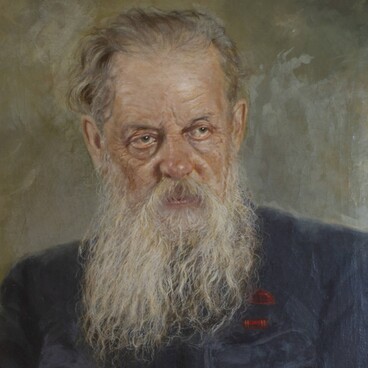Instruments under the brand name “Red October” were produced in Leningrad at the former piano factory of Jacob Becker, formerly supplier to the imperial court. In the late 19th century, Becker pianos were among the best sounding pianos in the world. They were played by Franz Liszt, Camille Saint-Saens, Pyotr Tchaikovsky, the Rubinstein brothers and many other prominent musicians.
After the Russian Revolution, the factory was nationalized by the Bolsheviks. At first, this led to a decline, but after the Great Patriotic War, the quality of Soviet products manufactured at the factory significantly increased. For instance, the concert grand piano “Russia” of the brand “Red October” was awarded the Grand Prix at the 1958 Brussels World’s Fair.
The piano appeared in the house of Pavel Petrovich Bazhov in the middle of the 20th century. The writer’s family was quite musical. Valentina Alexandrovna, Bazhov’s wife, sang beautifully and accompanied herself on the guitar. Their son Alexey had a good ear for music and, according to the memoirs of his contemporaries, “could extract sounds from any object that came to hand.” He independently and without any assistance mastered a number of stringed instruments: the guitar, mandolin, and accordion.
Pavel Petrovich himself could neither sing nor play musical instruments, which he clearly regretted and mentioned repeatedly in passing or directly.
In 1946, Bazhov’s youngest daughter Ariadna had her first child Nikita. The boy lived with his grandparents who passionately loved him. The writer bought the piano which now stands in the living room specifically for Nikita. Bazhov hoped that his grandson would grow up and learn to play an instrument. However, Nikita developed other interests, and music was not one of them. Thus, not a single member of the Bazhov family played the piano.
However, the instrument did not stand there simply gathering dust. After the publication of the collection “The Malachite Box”, the fame of the Ural author grew and the house gradually turned into a kind of salon — a popular place where various creative people would meet. Guests, including those who could play the piano, constantly gathered in the living room. Therefore, sometimes the family hosted fun musical evenings.
After the Russian Revolution, the factory was nationalized by the Bolsheviks. At first, this led to a decline, but after the Great Patriotic War, the quality of Soviet products manufactured at the factory significantly increased. For instance, the concert grand piano “Russia” of the brand “Red October” was awarded the Grand Prix at the 1958 Brussels World’s Fair.
The piano appeared in the house of Pavel Petrovich Bazhov in the middle of the 20th century. The writer’s family was quite musical. Valentina Alexandrovna, Bazhov’s wife, sang beautifully and accompanied herself on the guitar. Their son Alexey had a good ear for music and, according to the memoirs of his contemporaries, “could extract sounds from any object that came to hand.” He independently and without any assistance mastered a number of stringed instruments: the guitar, mandolin, and accordion.
Pavel Petrovich himself could neither sing nor play musical instruments, which he clearly regretted and mentioned repeatedly in passing or directly.
In 1946, Bazhov’s youngest daughter Ariadna had her first child Nikita. The boy lived with his grandparents who passionately loved him. The writer bought the piano which now stands in the living room specifically for Nikita. Bazhov hoped that his grandson would grow up and learn to play an instrument. However, Nikita developed other interests, and music was not one of them. Thus, not a single member of the Bazhov family played the piano.
However, the instrument did not stand there simply gathering dust. After the publication of the collection “The Malachite Box”, the fame of the Ural author grew and the house gradually turned into a kind of salon — a popular place where various creative people would meet. Guests, including those who could play the piano, constantly gathered in the living room. Therefore, sometimes the family hosted fun musical evenings.



